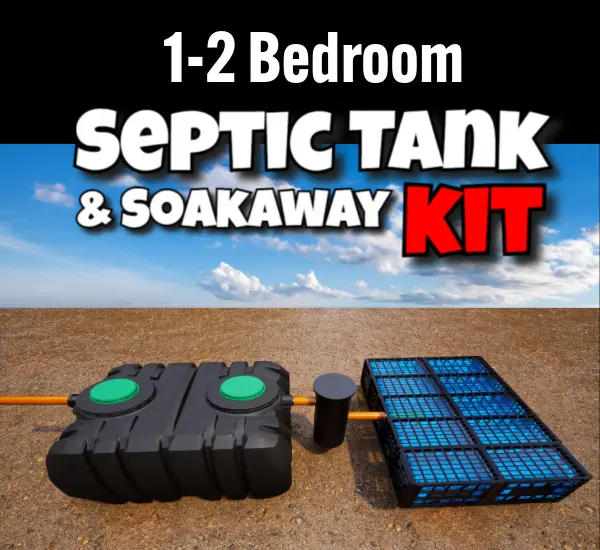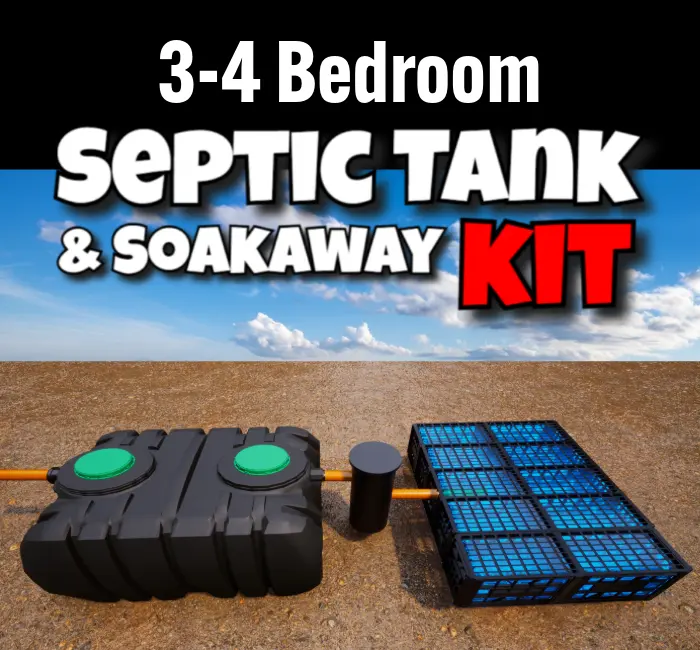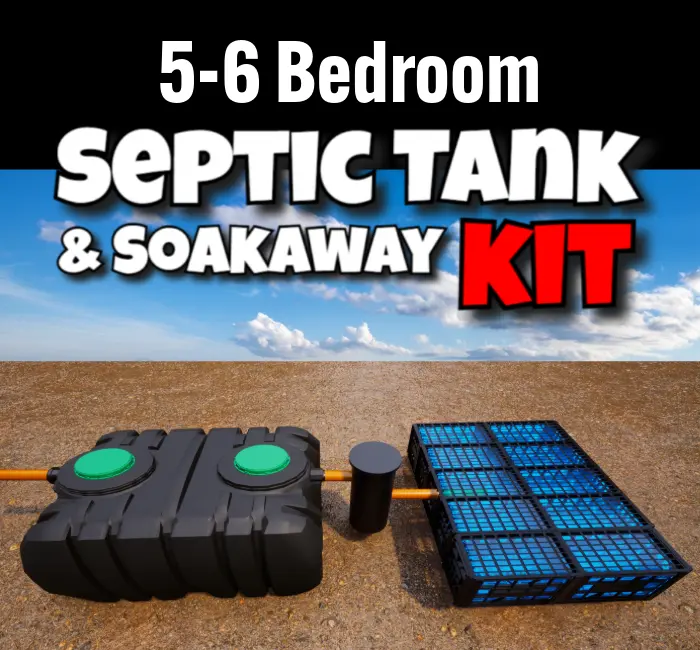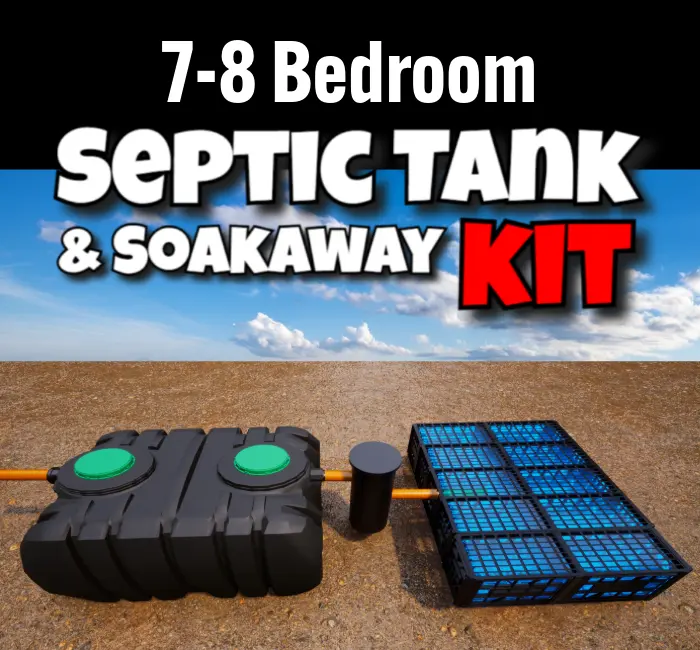Septic Tank Installation Cost in the UK: A Comprehensive Guide
Installing a septic tank is a significant investment for UK homeowners, businesses, and property developers in areas without access to mains sewer systems. The cost of septic tank installation typically ranges from £12,000 to £20,000, depending on factors such as tank material, size, site conditions, and labour charges. However, with the right approach, such as using DIY septic tank kits, you can save thousands of pounds while achieving a compliant and efficient wastewater management system.
This 8000–9000-word guide provides an in-depth exploration of septic tank installation costs in the UK, breaking down the factors that influence expenses, comparing different tank materials (plastic, fibreglass, and concrete), and highlighting cost-saving options like shallow dig septic tank kits. We’ll also address common questions in a detailed FAQ section, ensuring you have all the information needed to make informed decisions. For additional resources, visit Builders Yard UK or explore our range of septic tank solutions.
Understanding Septic Tank Installation Costs
Septic tank installation costs in the UK vary widely due to several factors, including the type of tank, the size of the system, ground conditions, and whether you opt for professional installation or a DIY approach. On average, professional installations cost between £12,000 and £20,000, with some projects exceeding this range for larger properties or challenging sites.
Breakdown of Septic Tank Installation Costs
Here’s a detailed breakdown of the typical costs involved in a professional septic tank installation:
- Septic Tank Purchase: £2,000–£10,000, depending on material (plastic, fibreglass, or concrete) and capacity (3000–6000 litres).
- Excavation and Groundwork: £1,500–£3,000, influenced by site accessibility, soil type, and excavation depth.
- Drainage Field Materials: £1,000–£2,500, including pipes, gravel, or drainage crates.
- Labour Charges: £4,000–£7,000, covering installation, connection, and testing.
- Concrete Surround (if required): £1,000–£2,000, mandatory for concrete tanks in unstable soils.
- Permits and Approvals: £500–£1,500, for Environment Agency permits or planning permissions.
- Miscellaneous Costs: £500–£1,500, including delivery, equipment hire, and site reinstatement.
For example, a professional installation for a 4-bedroom home might cost £18,000, including a £5,000 concrete tank, £2,500 for excavation, £5,000 for labour, and additional expenses for permits and materials.
Factors Influencing Septic Tank Installation Costs
Several variables affect the total cost of septic tank installation:
- Tank Material: Plastic tanks are generally cheaper than fibreglass or concrete, but each has unique advantages.
- Property Size: Larger households require bigger tanks and drainage fields, increasing costs.
- Ground Conditions: Clay soils or high water tables may require additional groundwork or materials.
- Installation Method: DIY kits can reduce labour costs significantly compared to professional services.
- Regulatory Requirements: Compliance with Environment Agency General Binding Rules may involve permit fees.
- Site Accessibility: Remote or difficult-to-access sites increase excavation and transport costs.
By understanding these factors, you can make strategic choices to manage costs effectively.
Types of Septic Tanks: Plastic, Fibreglass, and Concrete
The choice of septic tank material significantly impacts installation costs, durability, and ease of setup. The three primary materials available in the UK are plastic (HDPE), fibreglass, and concrete. Each has distinct characteristics, advantages, and drawbacks.
1. Plastic Septic Tanks (HDPE)
Plastic septic tanks, made from high-density polyethylene (HDPE), are lightweight, corrosion-resistant, and increasingly popular for residential applications.
- Cost: £2,000–£5,000.
- Pros:
- Lightweight, reducing transport and installation costs.
- Corrosion-resistant, ideal for wet or acidic soils.
- Shallow dig designs (1–1.5m) minimise excavation expenses.
- Certified to EN 12566-1 standards for durability.
- Suitable for DIY installations, saving £4,000–£7,000 in labour.
- Cons:
- Less robust than concrete in high-traffic areas unless reinforced.
- May require anchoring in high water table areas, adding £500–£1,000.
Plastic tanks are ideal for cost-conscious homeowners, especially when paired with DIY kits like those offered by Builders Yard UK.
2. Fibreglass Septic Tanks
Fibreglass tanks, made from glass-reinforced plastic, offer a balance of strength and weight, suitable for challenging ground conditions.
- Cost: £3,000–£7,000.
- Pros:
- Stronger than plastic, suitable for areas with vehicle traffic.
- Corrosion-resistant, with a lifespan of 30–50 years.
- Lighter than concrete, simplifying installation.
- Cons:
- Higher upfront cost than plastic tanks.
- Can crack if improperly installed, requiring repairs (£500–£1,500).
- Less widely available, potentially increasing delivery costs.
Fibreglass tanks are a good middle-ground option but less common for DIY projects due to their cost and installation requirements.
3. Concrete Septic Tanks
Concrete “onion” tanks are traditional, robust, and widely used for large-scale applications but come with higher costs and installation challenges.
- Cost: £5,000–£10,000.
- Pros:
- Extremely durable, lasting 50+ years with proper maintenance.
- Resistant to buoyancy in high water tables.
- Suitable for heavy-duty applications, such as large properties.
- Cons:
- Heavy, requiring cranes or heavy machinery (£500–£1,500 in equipment hire).
- Requires a concrete surround (£1,000–£2,000) in unstable soils.
- Deep excavation (2–3m) increases groundwork costs (£2,000–£4,000).
- Prone to cracking in shifting soils, with repairs costing £1,000–£3,000.
While concrete tanks are durable, their high installation costs make them less attractive for budget-conscious projects.
Comparison Table: Plastic vs. Fibreglass vs. Concrete Septic Tanks
| Feature | Plastic (HDPE) | Fibreglass | Concrete |
|---|---|---|---|
| Cost | £2,000–£5,000 | £3,000–£7,000 | £5,000–£10,000 |
| Weight | Lightweight | Moderate | Heavy |
| Installation Time | 3–6 hours | 6–12 hours | 1–2 days |
| Durability | 25–50 years | 30–50 years | 50+ years |
| Corrosion Resistance | High | High | Moderate |
| Excavation Depth | Shallow (1–1.5m) | Moderate (1.5–2m) | Deep (2–3m) |
| Best For | DIY, small gardens, clay soil | Heavy traffic areas | High water tables, large sites |
This table illustrates why plastic tanks, especially those in DIY kits, are often the most cost-effective choice for many UK properties.
Cost-Saving Solutions: Shallow Dig Septic Tank Kits
One of the most effective ways to reduce septic tank installation costs is by using shallow dig septic tank kits, such as those available from Builders Yard UK. These kits are designed for easy installation, requiring minimal equipment and no prior experience, making them ideal for DIY enthusiasts or local builders.
Components of a Shallow Dig Septic Tank Kit
A typical septic tank kit includes:
- Heavy-duty, shallow dig, low-profile HDPE septic tank (3000–4000 litres).
- 5 lengths of 110mm underground pipe.
- 110mm connectors.
- 8–14 drainage field crates (depending on kit size).
- Free membrane.
These kits are priced at £3499 for 1-2, 3-4, 5-6, and 7-8 bedroom properties, with varying numbers of drainage crates (8, 10, 12, and 14, respectively). They are designed to serve properties of all sizes, from small homes to large glamping sites.
How Shallow Dig Kits Save Money
Compared to traditional septic tank installations, shallow dig kits offer significant savings:
- Reduced Excavation Costs: Requiring only 1–1.5m depth, these kits cut excavation costs by £1,000–£2,000 compared to 3m-deep concrete tank installations.
- No Concrete Required: Unlike concrete tanks, HDPE tanks are backfilled with soil or gravel, saving £1,000–£2,000 on concrete surrounds.
- Compact Drainage Field: Drainage crates provide a 95% void ratio, reducing the land area needed and saving £500–£1,500 on materials compared to gravel-based soakaways.
- DIY Installation: Professional labour costs £4,000–£7,000, but DIY kits can be installed in 3 hours with a 1.5, 3, or 5-tonne digger, costing £0–£500 for a local builder.
- Clay Soil Compatibility: The drainage field sits 500mm below the grass, avoiding dense clay layers and eliminating the need for costly modifications (£1,000–£3,000).
- Fuel Efficiency: Smaller diggers use less diesel, saving £200–£500 compared to larger machines required for deep excavations.
For example, a DIY installation using a £3499 kit for a 1-2 bedroom home, plus £500 for digger hire and £500 for labour, totals £4,499. This saves £7,501–£15,501 compared to a £12,000–£20,000 professional installation.
Regulatory Compliance of Shallow Dig Kits
Shallow dig septic tank kits are fully compliant with UK regulations, including:
- UK Building Control: Meets Part H of Building Regulations for drainage and waste disposal.
- Environment Agency: Adheres to General Binding Rules for small sewage discharges to the ground.
- British Standards: Certified to BS 6297:2007+A1:2008 and EN 12566-1.
These approvals ensure that the kits pass planning permission requirements, making them a reliable choice for homeowners and developers.
Sewage Treatment Plants vs. Septic Tanks: A Cost Comparison
Some homeowners consider sewage treatment plants as an alternative to septic tanks, believing they are more cost-effective or environmentally friendly. However, treatment plants have significant long-term costs that can outweigh their benefits.
Cost Breakdown of Sewage Treatment Plants
- Initial Cost: £5,000–£12,000 for purchase and installation, similar to or higher than septic tanks.
- Electricity Costs: £500–£1,000 annually, as treatment plants require constant power for aeration and pumps.
- Maintenance Costs: £750–£1,000 per year for servicing, due to complex components like motors, gears, and belts.
- Repair Costs: £1,000–£3,000 for replacing moving parts, which have a short 1-year warranty.
- Total 10-Year Cost: £15,000–£25,000, including installation, electricity, maintenance, and repairs.
In contrast, a septic tank kit costing £4,499 (including installation) with minimal maintenance (desludging every 1–3 years at £200–£400) totals £6,000–£8,000 over 10 years. This makes septic tanks a more cost-effective option for most properties.
Additional Cost Considerations
Beyond the initial installation, several ongoing and hidden costs should be considered:
- Desludging: £200–£400 every 1–3 years, depending on tank size and usage.
- Repairs: £500–£3,000 for issues like cracked tanks or clogged drainage fields.
- Permit Renewals: £100–£500 for Environment Agency permits, if required.
- Site Reinstatement: £500–£2,000 to restore landscaping after installation.
Choosing a low-maintenance option like a plastic septic tank kit can minimise these expenses over time.
Cost-Saving Tips for Septic Tank Installation
To keep septic tank installation costs within budget, consider these strategies:
- Opt for a DIY Kit: Kits like those from Builders Yard UK reduce labour costs by £4,000–£7,000.
- Choose Plastic Tanks: HDPE tanks are cheaper and easier to install than fibreglass or concrete.
- Use Drainage Crates: These reduce the size and cost of the drainage field compared to gravel soakaways.
- Hire Smaller Equipment: A 1.5–5-tonne digger is sufficient for shallow dig kits, saving £200–£500 on fuel and hire costs.
- Plan for Clay Soils: Shallow dig kits work well in clay, avoiding costly modifications.
- Check Regulations Early: Confirm compliance with Environment Agency rules to avoid unexpected permit fees.
By implementing these tips, you can significantly reduce the overall cost of your septic tank installation.
Applications of Septic Tank Kits
Septic tank kits are versatile and suitable for a wide range of properties:
- Domestic Homes: From 1-2 bedroom cottages to 7-8 bedroom houses.
- Businesses: Workshops, small offices, and rural businesses.
- Holiday Accommodations: Campsites, glamping sites, caravans, and mobile homes.
- Small Gardens: Compact designs fit postage stamp-sized plots.
- Challenging Soils: Effective in clay soils or high water tables.
Explore larger options like the 7-8 bedroom kit for bigger properties.
Attenuation Crates: Enhancing Wastewater Management
In addition to septic tank kits, Builders Yard UK offers attenuation crates for stormwater management, available in sizes for 4 to 100 persons. These crates store and slowly release stormwater, preventing flooding in areas with poor drainage. They are approved by UK Building Control and the Environment Agency, ensuring compliance with planning permissions. Using attenuation crates alongside septic tanks provides a comprehensive solution for both wastewater and surface water management, reducing long-term costs related to flooding or drainage issues.
FAQ: Septic Tank Installation Cost in the UK
What is the average cost of septic tank installation in the UK?
Professional septic tank installation typically costs £12,000–£20,000, including the tank, excavation, drainage field, labour, and permits. DIY kits can reduce costs to £4,000–£6,000.
How much can I save with a DIY septic tank kit?
A DIY kit costing £3499, plus £500–£1,000 for digger hire and labour, totals £4,000–£4,500, saving £7,500–£15,500 compared to professional installations.
Which septic tank material is the most cost-effective?
Plastic (HDPE) tanks are the most cost-effective, priced at £2,000–£5,000, with lower installation costs due to their lightweight design and shallow dig requirements.
Are sewage treatment plants cheaper than septic tanks?
No, sewage treatment plants have higher long-term costs due to electricity (£500–£1,000/year), maintenance (£750/year), and repairs (£1,000–£3,000), making septic tanks more economical.
How do drainage field crates save money?
Drainage crates have a 95% void ratio, reducing the size and material cost of the drainage field by £500–£1,500 compared to gravel-based soakaways.
Do septic tank kits work in clay soil?
Yes, shallow dig kits with drainage fields at 500mm depth perform well in clay soils, avoiding dense layers and reducing modification costs.
What permits are required for septic tank installation?
You may need an Environment Agency permit (£500–£1,500) for discharges over 2 cubic metres/day or if your property is near a public sewer. Check with the Environment Agency.
How often should a septic tank be desludged?
Desludging is recommended every 1–3 years, costing £200–£400, depending on tank size and usage.
Can I install a septic tank in a small garden?
Yes, shallow dig kits with compact drainage fields are designed for small gardens, requiring minimal space.
What are the ongoing costs of a septic tank?
Ongoing costs include desludging (£200–£400 every 1–3 years), repairs (£500–£3,000), and potential permit renewals (£100–£500).
Conclusion
Septic tank installation costs in the UK can be a significant expense, ranging from £12,000 to £20,000 for professional installations. However, by choosing cost-effective solutions like shallow dig septic tank kits, homeowners and developers can save £10,000–£20,000 while achieving a compliant and efficient wastewater system. Plastic tanks, drainage field crates, and DIY installation methods offer substantial savings without compromising quality. By understanding the factors that influence costs and leveraging regulatory-compliant kits, you can manage your septic tank project within budget. For more information, visit Builders Yard UK or explore our septic tank range.




